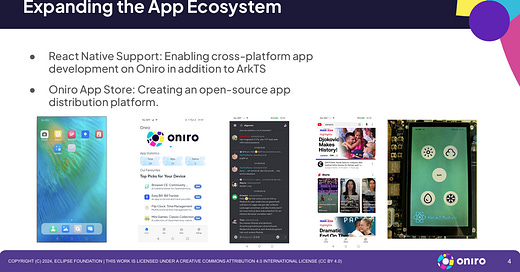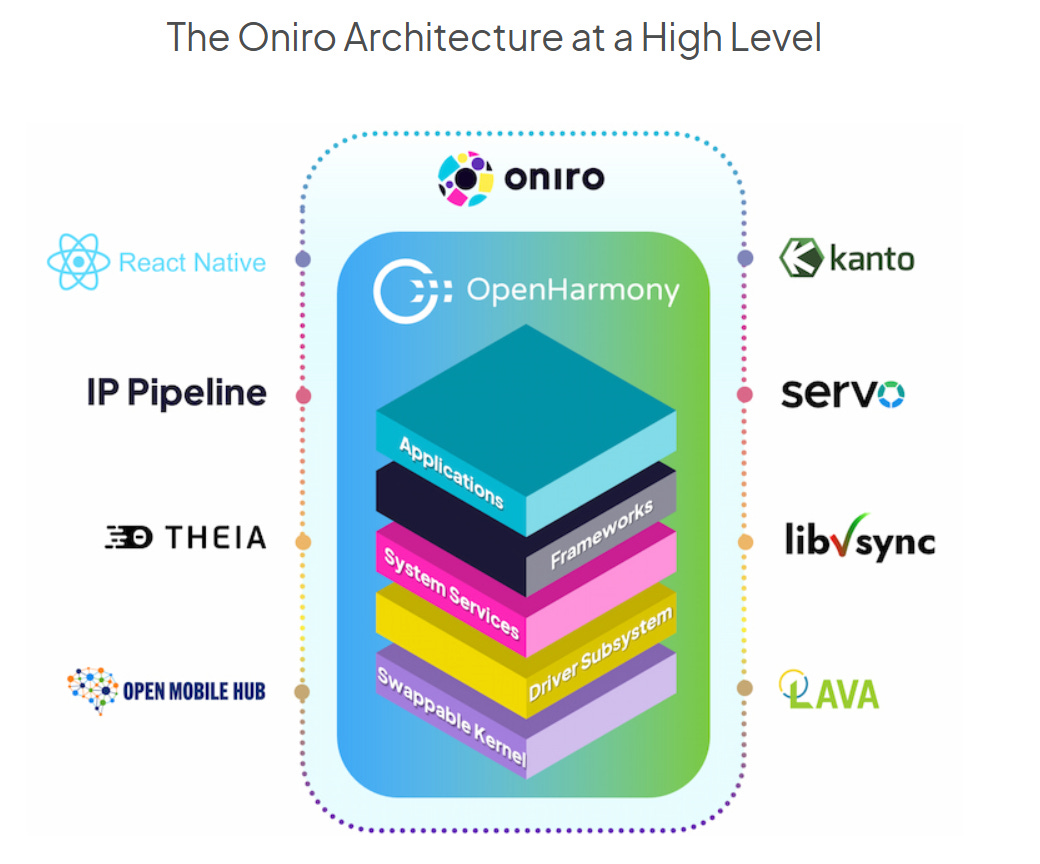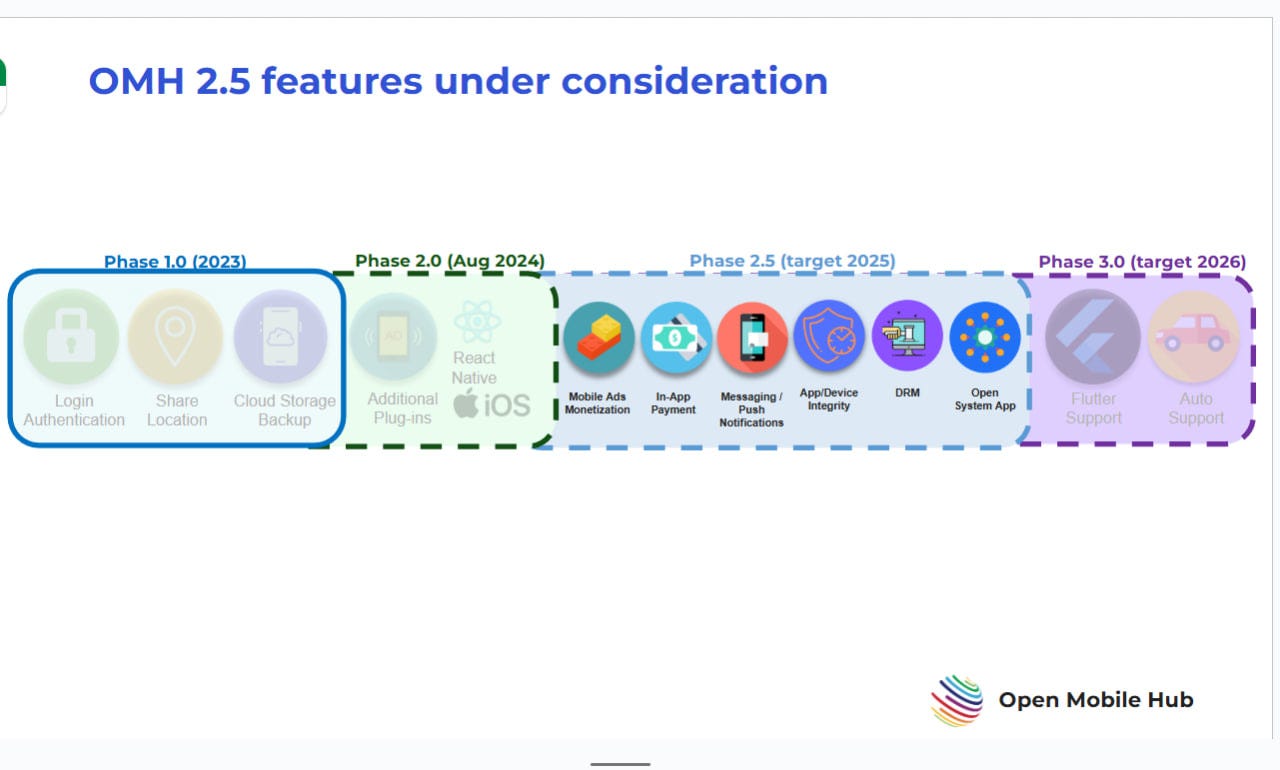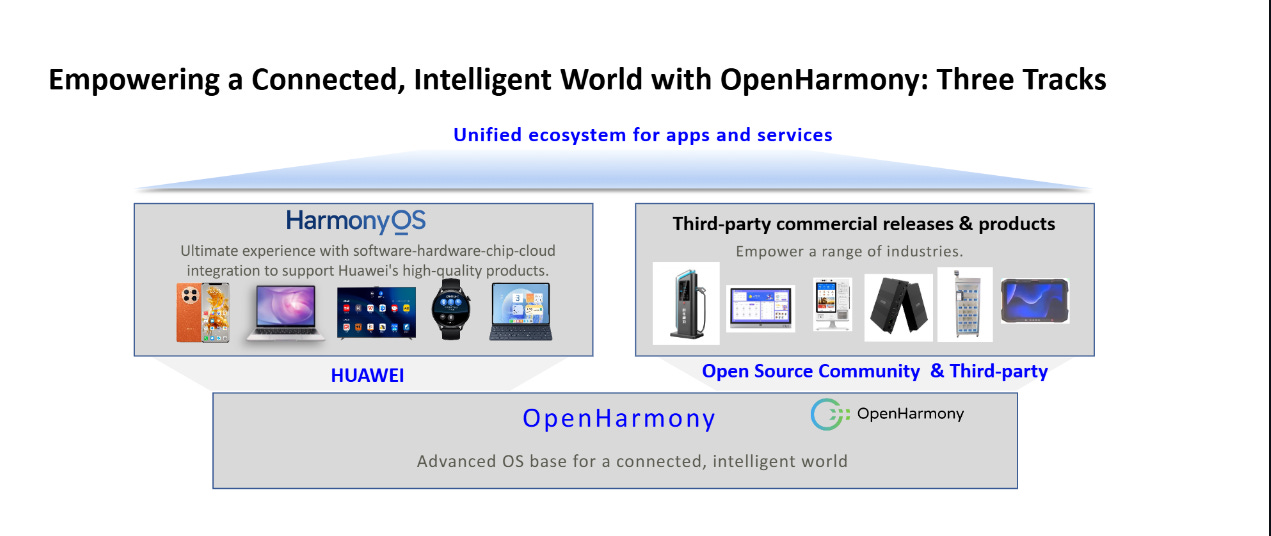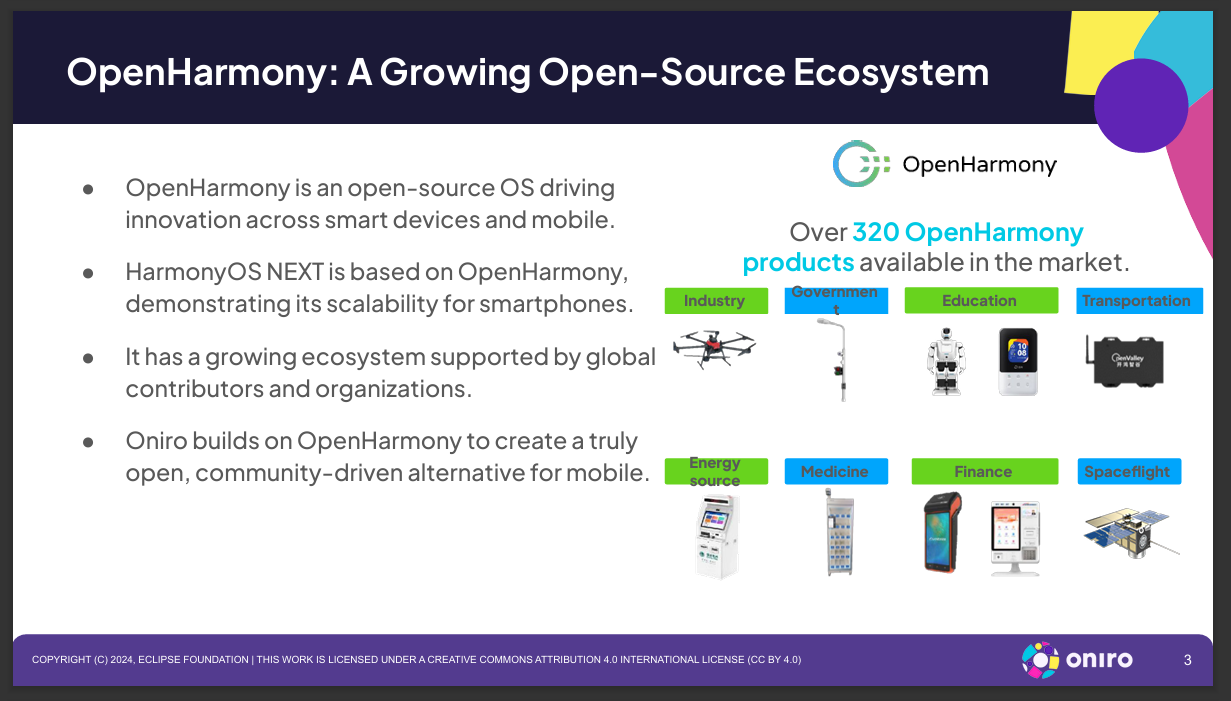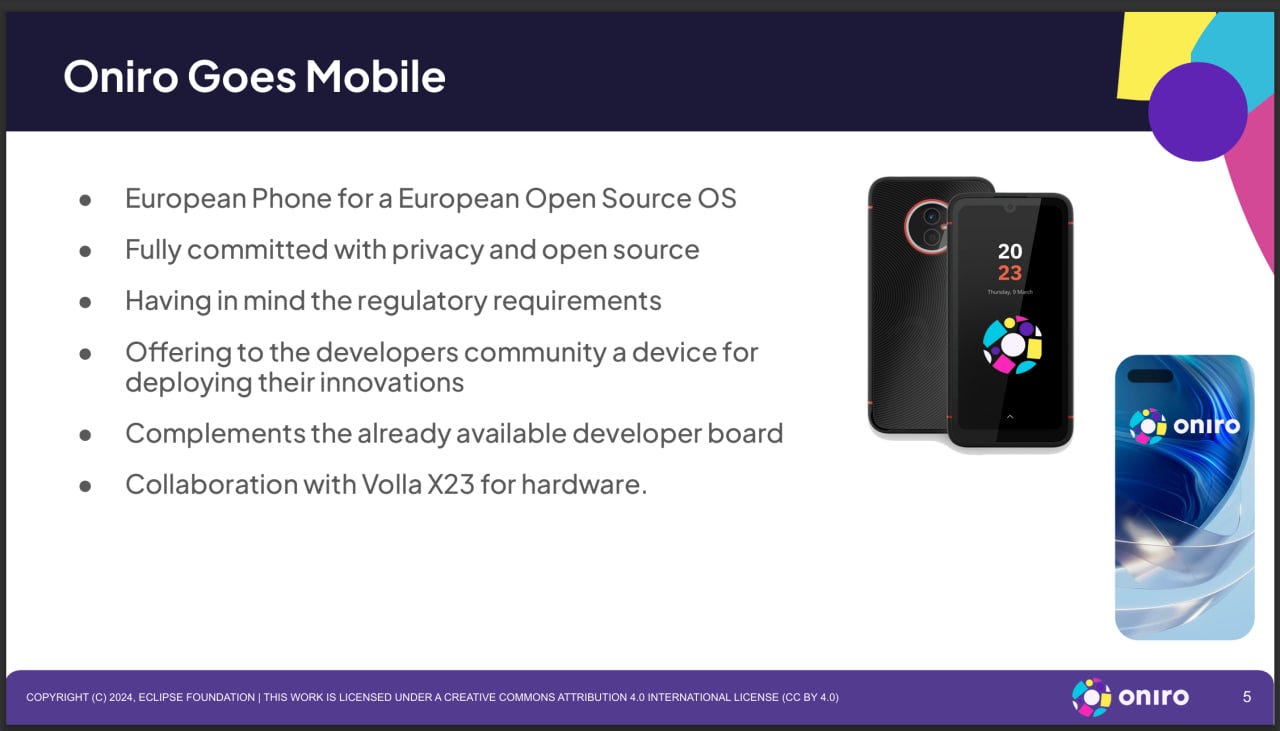Open Source Oniro App Store is a game changer
The true major open app store ecosystem that could shake up the traditional duopoly app store ecosystem industry forever
Let me tell you why it’s a game changer!
Eclipse is creating an open app ecosystem that enables cross-platform app development on the Oniro platform with React Native support in addition to ArkTS language on the ArkUI native framework alongside third-party open source frameworks like Flutter, etc., libraries, and other programming languages adapted to the OpenHarmony ecosystem, which are all open source and free to use the software development kits and integrated development environments with Eclipse Theia and DevEco Studio, which are beneficial for software developers and the industry at large. Eclipse open source Oniro App Store could have zero fees on the OpenHarmony-based Oniro platform with OEMs and app/game developers that includes the Linux Foundation Europe hosted Open Mobile Hub framework library, upper-level open app support, in-app purchases, optional ads monetisation strategies, optional DRM core functionality transparency user rights, controlled access with community collaboration with applications and games, from enterprises, other institutions like banks etc., which is planned for the OMH 2.5 version initial plans of the open source framework due for the summer/fall Q3 2025 target. Also, a possible free standalone independent Oniro App Store client within AppGallery on HarmonyOS Next accesses the EU-friendly market of open app stores with new compliance Digital Markets Act (DMA) regulations over mobile app stores, challenging Big Tech monopolies over app stores, payment systems, and billing systems over developers flexibility. Having an open app store such as the Oniro App Store benefits users access to apps like Duolingo, Discord, Gmail, YouTube, Wikipedia, ChatGPT client apps, etc. Which may happen at the same time while the Oniro App Store client could be bundled for free to OEMs on the Oniro platform.
The economical Spillover effect, win win for developers and community!
Huawei's own commercial HarmonyOS Next ecosystem itself offers that provides 20% cut and negotiated deals case by case where there can be no fees or even lower for different circumstances, better than the duopoly mobile competition, while you have an open-source Oniro App Store that provides zero fees to hardware OEMs and developers to publish their apps and games on the Eclipse app store, and app developers have total flexibility and freedom of the revenue/profits business side with alternative billing systems in the open source in-app purchase/single purchase systems provided, 100%. While Eclipse keeps the Oniro App Store lights on with community donations. That could be a game changer with this approach. The very best of both worlds, of open source with an open repository of applications similar to F-Droid for Android alongside commercial ecosystems. The global Eclipse Oniro App Store for the Oniro platform side, coexisting with Huawei's own separate commercial AppGallery on OpenHarmony-based HarmonyOS Next alongside other vendor OEM app store ecosystems on Oniro and OpenHarmony itself, is aiming to attract both open-source app developers and commercial developers to compete in the global mobile market, breaking the traditional duopoly market with Eclipse offering. Interoperability and compatibility support of the OpenHarmony wide ecosystem will be a win-win for developers and vendors. Gathering from a recent developer tutorial video in Chinese, OpenHarmony is compatible with HarmonyOS Next projects and vice versa, so you don't have to rewrite an application when adapting to the OpenHarmony base platform target since API 12, 5.0.0, where everything has been unified for developers, reducing development time with one app/game project on DevEco Studio IDE.
OpenChain, thanks to Array involvement on Oniro can fit well with FOSS principles with opening up of apps by ensuring that the management of intellectual property (IP) aligns with the core values of free and open-source software that is balanced. Here’s how:
Compliance with FOSS licences can help companies ensure that their use of FOSS complies with the relevant licenses, such as the GNU General Public License (GPL). This includes making sure that any modifications to the software are also distributed under the same license, preserving the software’s freedom.
OpenChain’s framework promotes transparency in the use and distribution of open-source software. By adhering to OpenChain standards, companies can build trust within the open-source community, demonstrating their commitment to maintaining the integrity of FOSS.
OpenChain provides resources and guidance on best practices for managing FOSS. This includes understanding the legal implications of different licenses and how to properly attribute and share software, which aligns with the GNU principle of promoting software freedom and collaboration.
By ensuring compliance and proper IP management, companies can mitigate the risk of legal disputes and IP infringement. This helps maintain the open and collaborative nature of FOSS while protecting the interests of all stakeholders.
Engaging with organisations like Array Law Firm involved in the Oniro project and OpenChain can foster a deeper connection with the open-source community. This can lead to more collaborative development efforts and a stronger ecosystem, which is a fundamental aspect of the GNU philosophy.
F-OH only includes free and open source software. "Free software must be open source, but open source software is not necessarily free. Some open source licenses are too harsh on users, so they are not listed as free software." Quoting the answer written by Richard Stallman, founder of Free GNU and FSF: Why does open source miss the point of free software?
By integrating these practices, companies can effectively balance their IP management with the principles of GNU FOSS, ensuring that their contributions remain free, open, and beneficial to the wider community.
That’s my thoughts about this exciting prospect coming to global open source FOSS developers. With the third platform's broad open ecosystem offerings on phones, tablets, virtual headsets and glasses, game consoles/portable systems, TV sets and boxes, wearables, and PCs, where application store access is available. A holistic open, secure, and privacy-conscious IoT smart appliance with a mobile ecosystem stands out from traditional offerings in the mobile duopoly and the desktop monopoly market.
Why Oniro?
With the global Oniro platform, you as a developer, an enterprise are joining over 320 OpenHarmony products from third party commercial vendors available in the market of deployment of over 100 million devices, a common open source emerging advanced embedded IoT OS platform base with potential commercial partners on Oniro including major OpenHarmony-based commercial Huawei HarmonyOS Next ecosystem install base in parallel with a large 1.4 billion+ market with emerging markets and lucrative western market as a major 3rd global platform with nearly 5% market share and 2nd largest OS platform in China with 17% market share as of Q3 2024 and over 20,000+ OpenHarmony apps to date.
Stock Oniro developer phone access from Volla, alongside other OpenHarmony-Oniro phone partners and existing Huawei devices running on the same OpenHarmony base platform that brings benefits which have lower barrier entry for developers across 190 markets.
Stay tuned for updates this year, we are just getting started!
Join the discussion on this prospect
Original Material: FOSDEM 2025 - Bringing Oniro to Mobile: Challenges in Hardware Enablement


